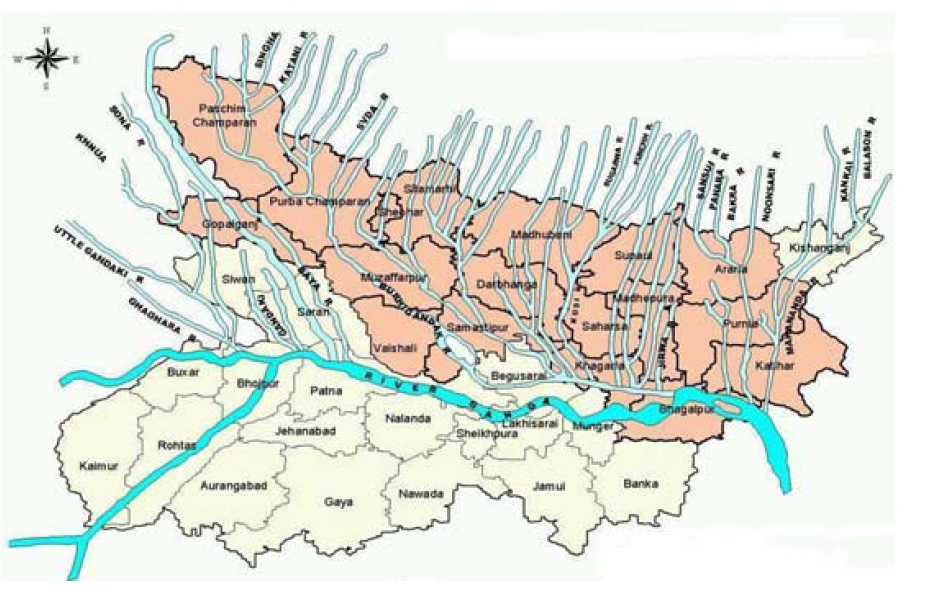Hindustani78
BANNED

- Joined
- Apr 8, 2014
- Messages
- 40,471
- Reaction score
- -47
- Country
- Location
Prime Minister's Office
26-March, 2015 19:36 IST
PM chairs meeting of National Ganga River Basin Authority
The Prime Minister, Shri Narendra Modi, today called for an "uncompromising mission-mode approach" to stop further pollution of the River Ganga.
Chairing the fifth meeting of the National Ganga River Basin Authority in New Delhi, the Prime Minister said the task of cleaning the Ganga was a challenging one, but had the potential to generate immense economical activity, and bring about a positive attitudinal change in the entire country. He said that it is "our responsibility for future generations" to save the River Ganga. He said the River Ganga was associated with "faith" and "devotion" among millions of Indians, and the task was to convert these positive sentiments, into a feeling of responsibility. He said the task at hand could not be accomplished without "Jan-Bhaagidaari" (people`s participation).
The Prime Minister urged the states to pay special attention to development of towns and villages located on the banks of the River Ganga, and to ensure sufficient awareness in these areas to stop pollution.
The Chief Ministers of Uttarakhand, Bihar and Jharkhand, who were present in the meeting, also spoke in detail on the subject, and about issues related to their respective states. The themes mentioned by them included silt management, and single-window clearances for proposals from the states.
Union Ministers Shri Arun Jaitley, Shri Venkaiah Naidu, Shri Nitin Gadkari, Ms. Uma Bharati, Shri Birender Singh, Shri Prakash Javadekar, Shri Piyush Goyal, Shri Sanwarlal Jat, and Vice Chairman of NITI Aayog Shri Arvind Panagariya were also present at the meeting.
The meeting was coordinated by Finance Minister Shri Arun Jaitley. Union Minister for Water Resources Ms. Uma Bharati introduced the issues at hand, and delivered the vote of thanks.
fullstory
21:25 HRS IST
New Delhi, Mar 26 (PTI) The Centre will enact a law for permanent protection of river Ganga from pollution as Prime Minister Narendra Modi today pitched for an "uncompromising mission-mode approach" to stop its further pollution.
The decision to enact the law was taken at a meeting here chaired by the Prime Minister and attended by Bihar Chief Minister Nitish Kumar, Uttarakhand Chief Minister Harish Rawat and Jharkhand Chief Minister Raghubar Das.
The Prime Minister, Shri Narendra Modi chairing the meeting of National Ganga River Basin Authority, in New Delhi on March 26, 2015.

The Prime Minister, Shri Narendra Modi chairing the meeting of National Ganga River Basin Authority, in New Delhi on March 26, 2015.

26-March, 2015 19:36 IST
PM chairs meeting of National Ganga River Basin Authority
The Prime Minister, Shri Narendra Modi, today called for an "uncompromising mission-mode approach" to stop further pollution of the River Ganga.
Chairing the fifth meeting of the National Ganga River Basin Authority in New Delhi, the Prime Minister said the task of cleaning the Ganga was a challenging one, but had the potential to generate immense economical activity, and bring about a positive attitudinal change in the entire country. He said that it is "our responsibility for future generations" to save the River Ganga. He said the River Ganga was associated with "faith" and "devotion" among millions of Indians, and the task was to convert these positive sentiments, into a feeling of responsibility. He said the task at hand could not be accomplished without "Jan-Bhaagidaari" (people`s participation).
The Prime Minister urged the states to pay special attention to development of towns and villages located on the banks of the River Ganga, and to ensure sufficient awareness in these areas to stop pollution.
The Chief Ministers of Uttarakhand, Bihar and Jharkhand, who were present in the meeting, also spoke in detail on the subject, and about issues related to their respective states. The themes mentioned by them included silt management, and single-window clearances for proposals from the states.
Union Ministers Shri Arun Jaitley, Shri Venkaiah Naidu, Shri Nitin Gadkari, Ms. Uma Bharati, Shri Birender Singh, Shri Prakash Javadekar, Shri Piyush Goyal, Shri Sanwarlal Jat, and Vice Chairman of NITI Aayog Shri Arvind Panagariya were also present at the meeting.
The meeting was coordinated by Finance Minister Shri Arun Jaitley. Union Minister for Water Resources Ms. Uma Bharati introduced the issues at hand, and delivered the vote of thanks.
fullstory
- Govt to make law to protect Ganga from pollution
21:25 HRS IST
New Delhi, Mar 26 (PTI) The Centre will enact a law for permanent protection of river Ganga from pollution as Prime Minister Narendra Modi today pitched for an "uncompromising mission-mode approach" to stop its further pollution.
The decision to enact the law was taken at a meeting here chaired by the Prime Minister and attended by Bihar Chief Minister Nitish Kumar, Uttarakhand Chief Minister Harish Rawat and Jharkhand Chief Minister Raghubar Das.
The Prime Minister, Shri Narendra Modi chairing the meeting of National Ganga River Basin Authority, in New Delhi on March 26, 2015.

The Prime Minister, Shri Narendra Modi chairing the meeting of National Ganga River Basin Authority, in New Delhi on March 26, 2015.

Last edited:









